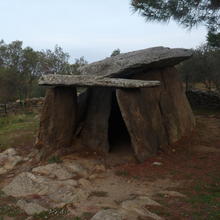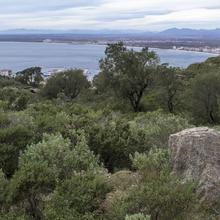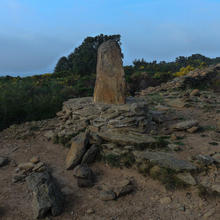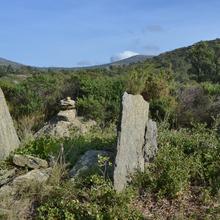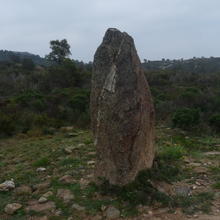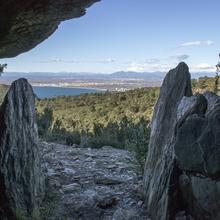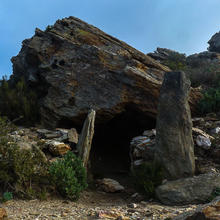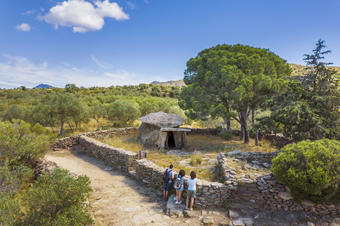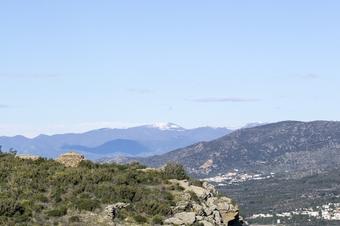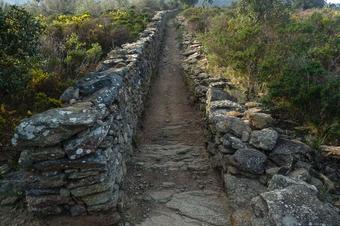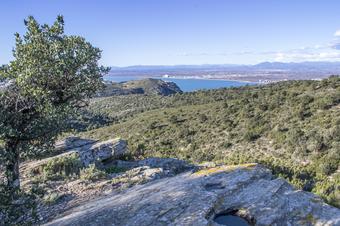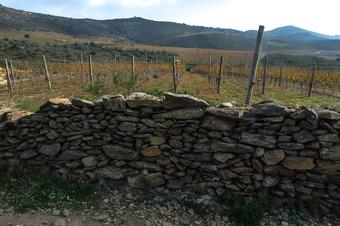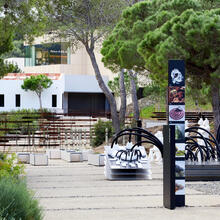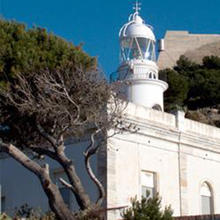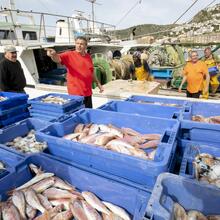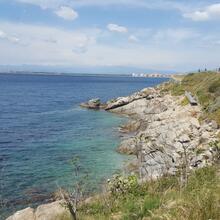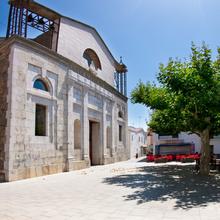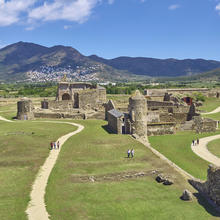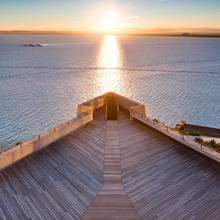Introduction
Dolmens, terraces and dry stonework through the Quarantena valley
This brief route allows us to visit the megalithic area of Casa Cremada, and ends by climbing the ridge until it reaches the Pla de les Gates and then links with the road that descends down through the Quarantena valley. It includes the visit to various prehistoric areas and cultural expressions of the Neolithic era of the farming communities that settled in the area. In addition, this route also highlights the presence of dry stone constructions, a heritage created by the agriculture of the area which can be seen in the morphology of the landscape.
It can be complemented by the Megalithic and the Dry Stone I Itineraries, with which it shares a section.
We recommend the Local Natura App to do this route. Download it for free here:
Apple store Google Play


-
TypologyTime Circular
-
DifficultyEasy
-
Duration1 hour 30 minutes
-
Slope213.00 meters
-
Distance4.40 km
-
ThemeEnvironmentArchitecture and environmentLandscaping
-
ActivityBy foot
-
Rating
Slope graph

Description
Dolmens, terraces and dry stonework through the Quarantena valley
We start the route by heading up a hillside where there are some surviving and still productive terraces of olive groves built on beautiful dry stone banks. Half-way up, the first megalithic element of the day takes us by surprise: the dolmen of the Creu d'en Cobertella, lying right next to the ruins of the farmhouse from which the dolmen takes its name.
We are plunged into a landscape of Mediterranean scrub dotted with pines and cork oaks, which has developed with the abandonment of olive groves, glimpses of which can still be seen in the midst of the natural vegetation. Dry stone contructions abound, something that will be seen all along the route: banks, walls, huts etc.
Passing the ruins of Casa Cremada brings us close to the two menhirs which take their name from Casa Cremada. We also pass a beautiful example of a dry-stone hut, the Casa Cremada dolmen and the ruins of what is thought to be a pre-Romanseque church, until we arrive at the edge of the Alzeda crest, where we can once again enjoy another fine example of a hut. From here, we will be following the line of the crest passing the third menhir in the area and enjoying, at some point, the panoramic views over the valley and the Alzeda farmhouse, as well as the Puig de l'Àliga mountain which lies in front of us at the head of the other side of the valley.
We will briefly head up to the Pla de les Gates, where we will begin the return following the Quarantena valley and where we can observe the Quarantena stones and dolmen caves. From here, and very close to the original departure point, the path runs along the edge of some attractive vineyards sandwiched between dry stone walls, man-made traces of the peasant life from not so very long ago.
Tips
ROUTE
- It is a rather stony route but wisely mixes the climbs with walking on the flat and descents. There are only two short stretches of continuous climb: the first to the ruins of the Casa Cremada and on the slope to climb the line of the Alzeda crest. The rest is on the side of the hills, level ground and descent.
- There are brief diversions on the route to visit some of the elements of interest. But at no point do you have to double back on yourself too much.
- You can combine this route by adding the Megalithic and Dry Stone I Itinerary, with which it shares some points of interest. In all cases, it is recommended to take the other first and this second as an addition. In this case, when you reach the Casa Cremada II menhir, you begin the second itinerary and start from here, saving yourself from having to go down to the beginning and go back over the same section with the points of interest that you’ll have already seen. Even so, you will return to some of the recent points of interest, going back over some of the way, but this is worth it as you will pass along the Alzeda crest and then down through the Quarantena valley, with new points of interest and new perspectives and landscapes.
WATER
- Bring water with you: there are no sources of drinking water at all on the path!
PRECAUTIONS
- At the edge of the Alzeda crest, take care of children, as there is a cliff.
WEATHER
- You should avoid times when the sun is at is stongest. There is almost no shade.
- Whatever time you go, always protect yourself with sunscreen. The terrain is quite sunny.
- This is an area where the Tramuntana wind often blows. If the wind is very strong, we don’t recommended going out into the countryside. In addition to affecting stability, remember that you might not enjoy your time due to the discomfort caused by the strong wind.
TERRAIN
- Unlike the paved and easy path at the beginning, the majority of the paths on which you’ll walk are quite stony and irregular. Therefore you should wear proper footwear, with thick soles and ankle support.
- Due to the unevenness of the paths, on some short stretches it is easy to trip or twist feet and ankles.
EQUIPMENT
- Trekking poles provide better stability on stony ground.
- In case of wind, it is recommended to wear a windproof jacket.
OTHER NOTES
- The route is signposted and contains information plates, although these may have disappeared or been damaged



